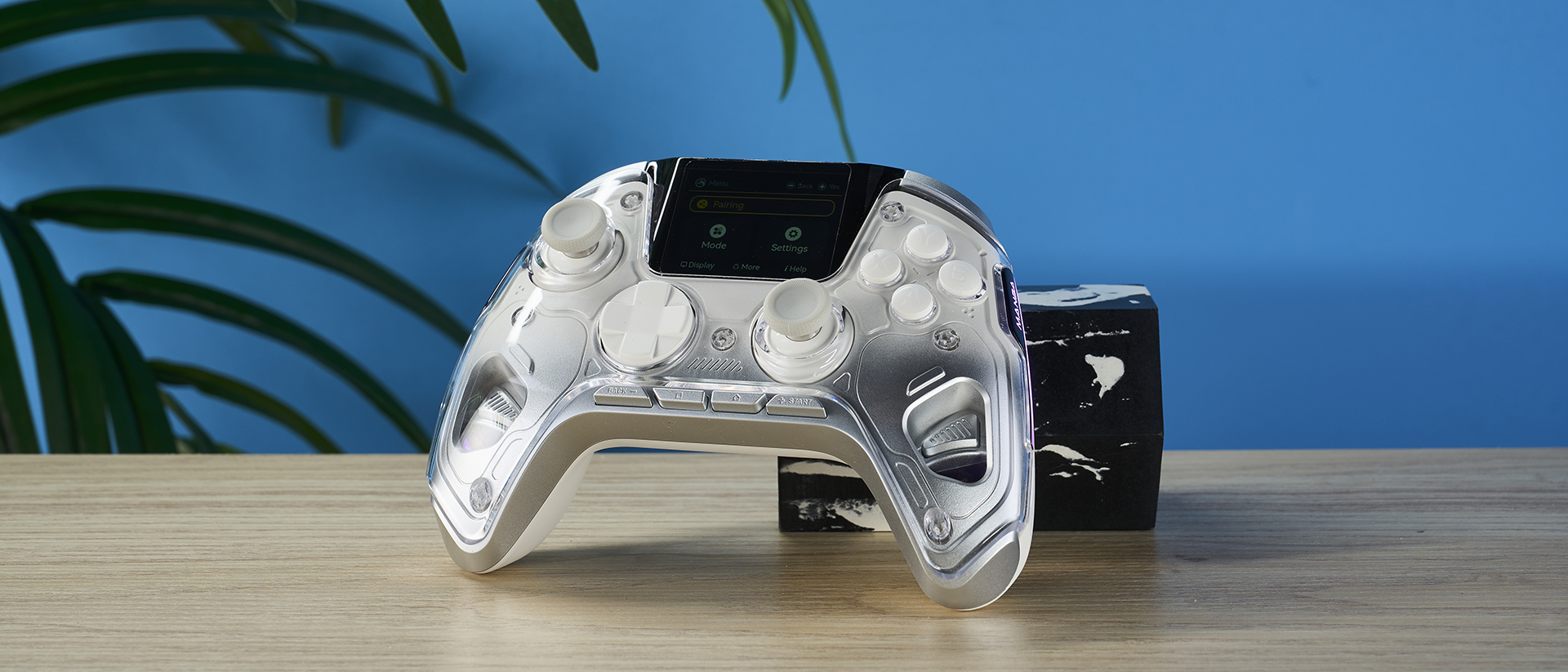Tom's Guide Verdict
The Manba One features Hall Effect controls, macro buttons and a built-in LED screen, alongside high levels of onboard customization. However, it is held back from being an easy recommendation due to underwhelming buttons and triggers, a cheap aesthetic and no 2.4Ghz support. You can do a lot better for the price.
Pros
- +
Good amount of customization
- +
LED screen
- +
Hall effect thumbsticks
- +
Four macro buttons
Cons
- -
Unsatisfying buttons
- -
50% hair triggers
- -
Cheap-feeling case
- -
No 2.4Ghz support
Why you can trust Tom's Guide
The Manba One is the flagship controller from Manba — a manufacturer of gamepads and console accessories. Aimed at those looking for a third-party upgrade for their PC, Switch or mobile, this pad certainly delivers in certain key areas.
The best thing about the controller is the most obvious: the built-in LED screen in the center of the controller, which allows easy access to a variety of settings. From pairing to joystick configuration, you can do it all on the display without installing software on your PC. It also features Hall Effect thumbsticks and triggers — a magnetic technology that eliminates stick drift.
Unfortunately, the controller’s cons undermine its strengths, chief among which is the quality that pales in comparison to the very best Switch controllers. Annoyingly clicky buttons and a cheap feeling transparent design on the casing, among other problems, also prevent the Manba One from being a flat out recommendation.
Read on for my full Manba One controller review.
Manba One controller review: Cheat Sheet
- What is it? An Xbox / Switch Pro-style wireless gamepad for PC and Switch
- Who is it for? Anyone tempted by the idea of a screen on their Switch controller (sorry if that just brought back painful Wii U memories)
- What does it cost? $69 from Amazon, or direct from Manba
- What do we like? I really liked the screen for quick configuration tweaks, and the hall effect thumbsticks felt great to use
- What don’t we like? The face buttons and D-Pad are frustratingly shallow, and the case is both visually unappealing and cheap-feeling
Manba One controller review: Specs
| Price | $69 / £75 |
| Layout | Xbox ABYX / Switch Pro |
| Connection | Wired USB, Bluetooth 5.0 |
| Battery | 1800mAh |
| Colors | White, Black |
| Platforms | PC, Switch, Android, iPhone |
| Weight | 10.4 ounces |
| Size | 6.1 x 4.2 x 2.6 inches |
Manba One controller review: The ups
The Manba One offers more onboard customization than any controller I’ve used. Its LED screen makes it easy to configure and toggle settings to your heart’s content. This complements the highly-adjustable and reactive Hall Effect triggers and thumbsticks, which gave my performance a boost in both Switch and PC games.
Ergonomic design
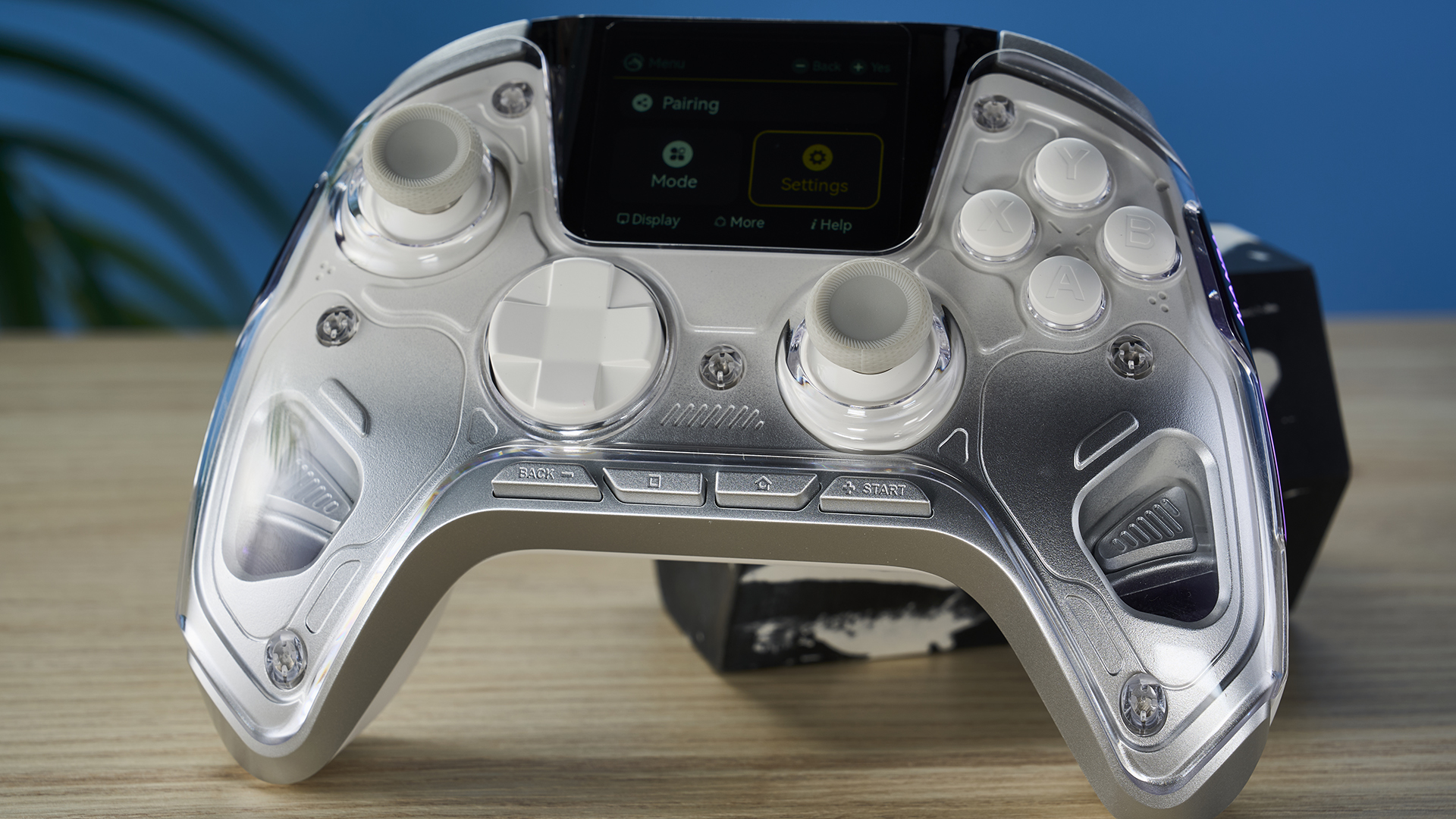
The shell shape used for the Manba One is very similar to the classic Xbox layout, but you’ll also be at home if you have used a Switch Pro controller before — expect relatively thick hand grips, which provide comfortable hand support. It measures up very similarly to the GameSir G7 SE ($49), which I also found to be comfortable for long gaming sessions, although the Manba One is slightly taller, so if you have smaller hands you might struggle to hit the right and left bumper buttons.
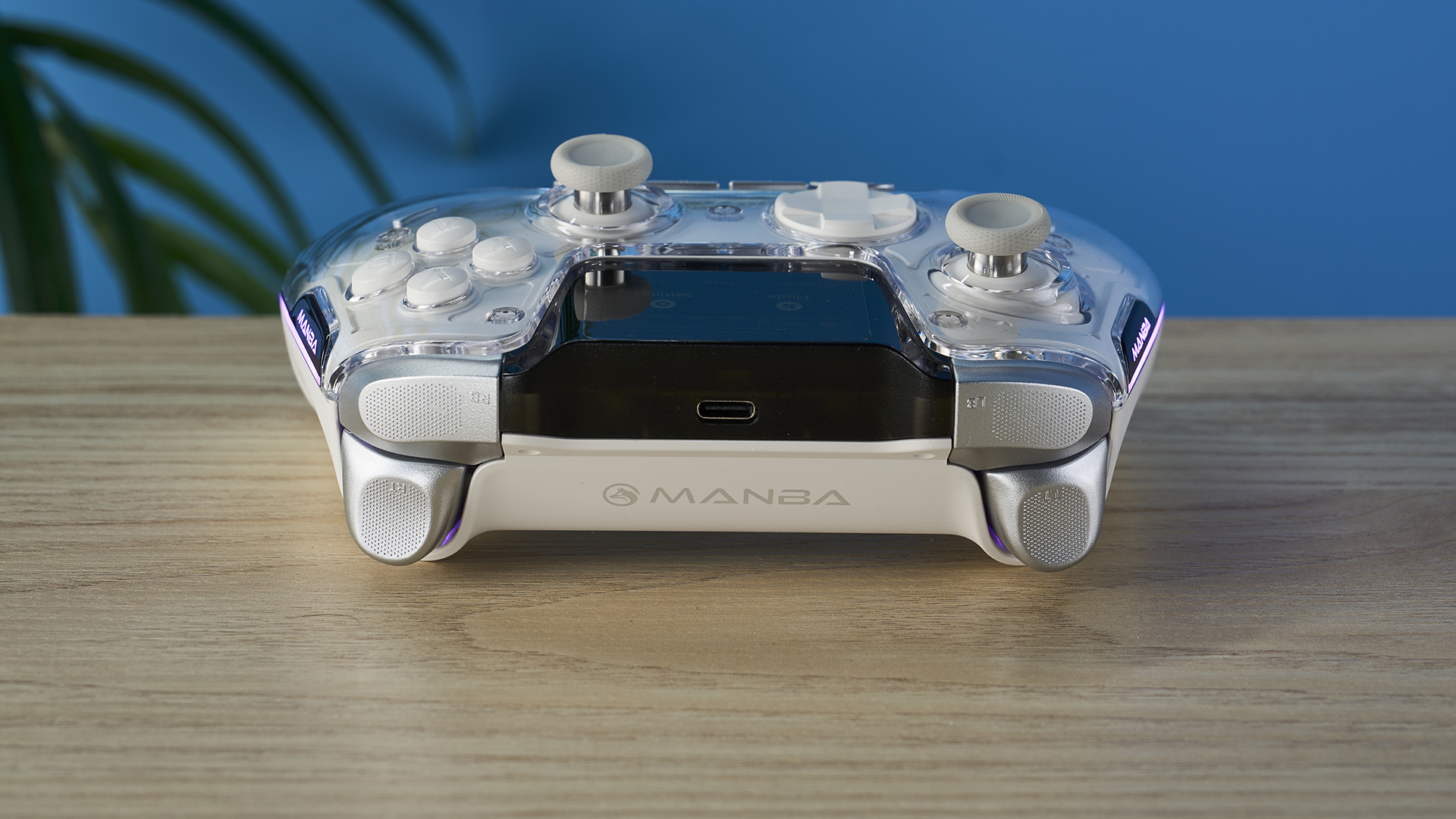
Another aspect of the design I appreciate is the use of textured materials. The triggers use a glossy, metallic finish — the kind that caused me problems on other controllers like the PB Tails Metal Crush Defender ($109). However, the Manba One’s triggers and bumpers add some grippy texturing to prevent your fingers from slipping. This worked a treat in Mario Kart, where I could reliably drift and use items without worrying about my grip.
LED Screen
The standout feature of the Manba One is its LED screen. Located in the center of the controller. This gives you access to a wealth of customization — even beyond that offered by some dedicated companion apps, which typically offer more customization than onboard controls.
You can access the menu at any time by holding down the Home button, which came in handy if I needed to make some quick in-game adjustments. This was particularly useful when initially adjusting the controller to my preference between rounds of Fortnite.
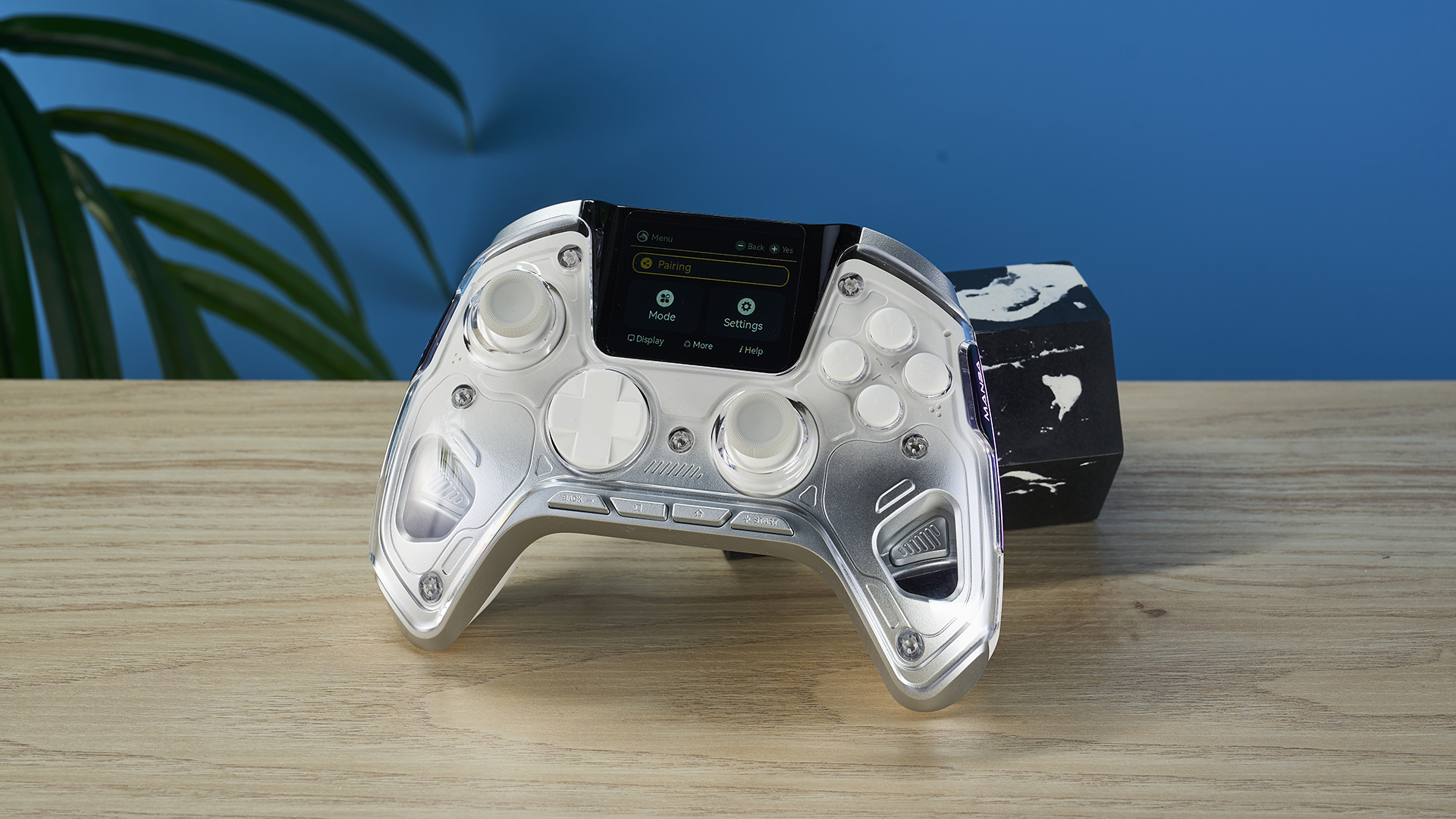
You can navigate through the menus easily using the ‘’+’’ and ‘’-’’ buttons alongside the D-pad. The UI is clean and easy to use, showing the current connection mode and battery status in the top right. It’s convenient for checking the controller’s status, and you can configure it even when it’s not connected to a device. The Manba One offers extensive customization options.
There are 3 profiles, and a dedicated Switch profile which changes the face button layout to have ‘’A’’ on the right. Even if you’re not keen on micromanaging your deadzones, you can still configure button binds and adjust the strip of RGB lights on the side of the controller.
Back buttons
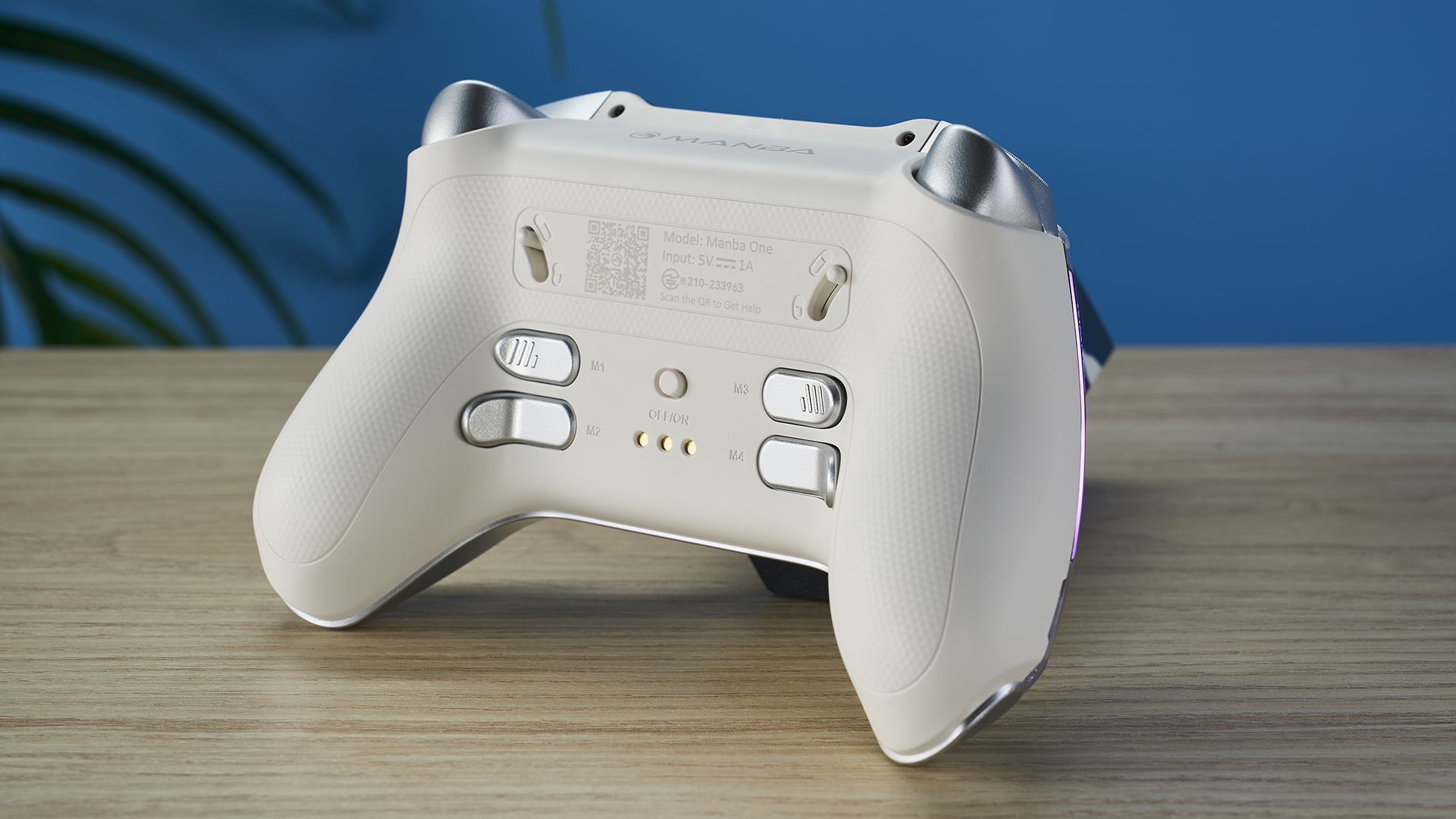
The Manba One features four rebindable back buttons, which can be set up using the controller settings. The standout feature is that these buttons can be programmed to bind to multiple button presses, with up to 20 buttons per bind. This has a much wider use than single button configuration, allowing you to essentially record macros on the controller — useful for automating repetitive tasks in-game, such as CQC combos in Metal Gear Solid 3.
Hall Effect
On top of entirely eliminating stick drift, the increasingly popular Hall Effect technology gives the controller an extra boost in customizability. You can adjust the thumbstick curve, essentially changing how much thumbstick movements correspond to in-game movement.
Hall Effect technology is also used on the triggers, and you can also adjust the point at which a full stroke of the trigger is registered too, between 50 and 100%. This is great for those who want to increase responsiveness while not committing to toggling the Manba One’s hair trigger mode, turning the trigger input into a button press.
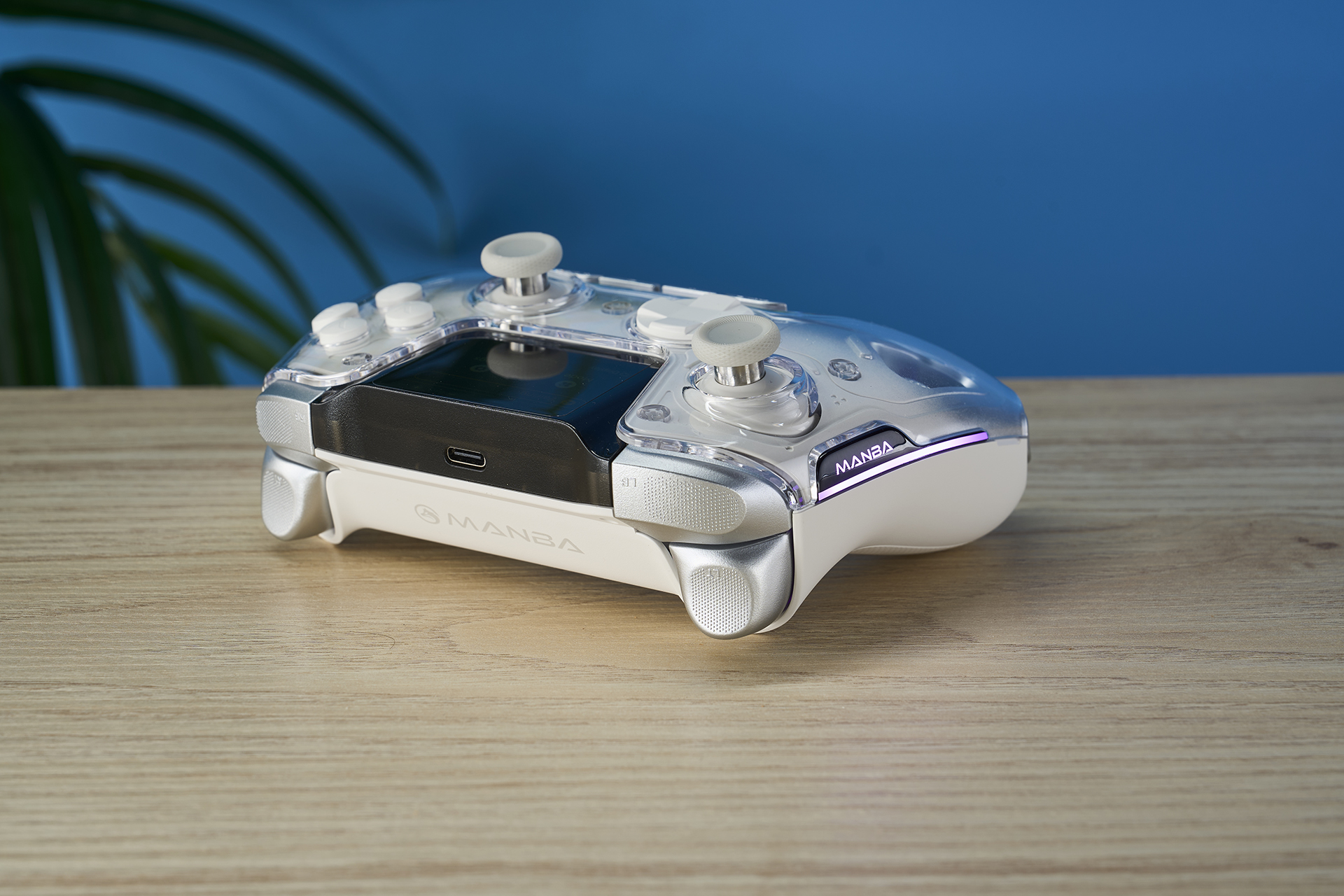
On top of this, the raw performance boost is very noticeable over traditional analog sticks. I struggle with accurate movement in Super Smash Bros — a game that requires precise movements, especially using JoyCons.
I found with Hall Effect sticks that smaller movements were better registered, and the smoother action of the stick meant that it was easier to distinguish between tilt attacks. This wasn’t as good as the TMR thumbsticks I have used on the Metal Crush Defender, but was an improvement over traditional thumbsticks.
Charging stand
A sweet bonus is the inclusion of a sturdy-yet-sleek charging stand for the controller. I really liked this compared to the included charger with the GameSir Tarantula Pro ($69), which in comparison felt flimsy and cheap. The Manba charging stand comes with rubberized feet to keep it in place, and a slightly bizarre but nevertheless useful storage compartment for the USB dongle — it reminds me of a battery slot.
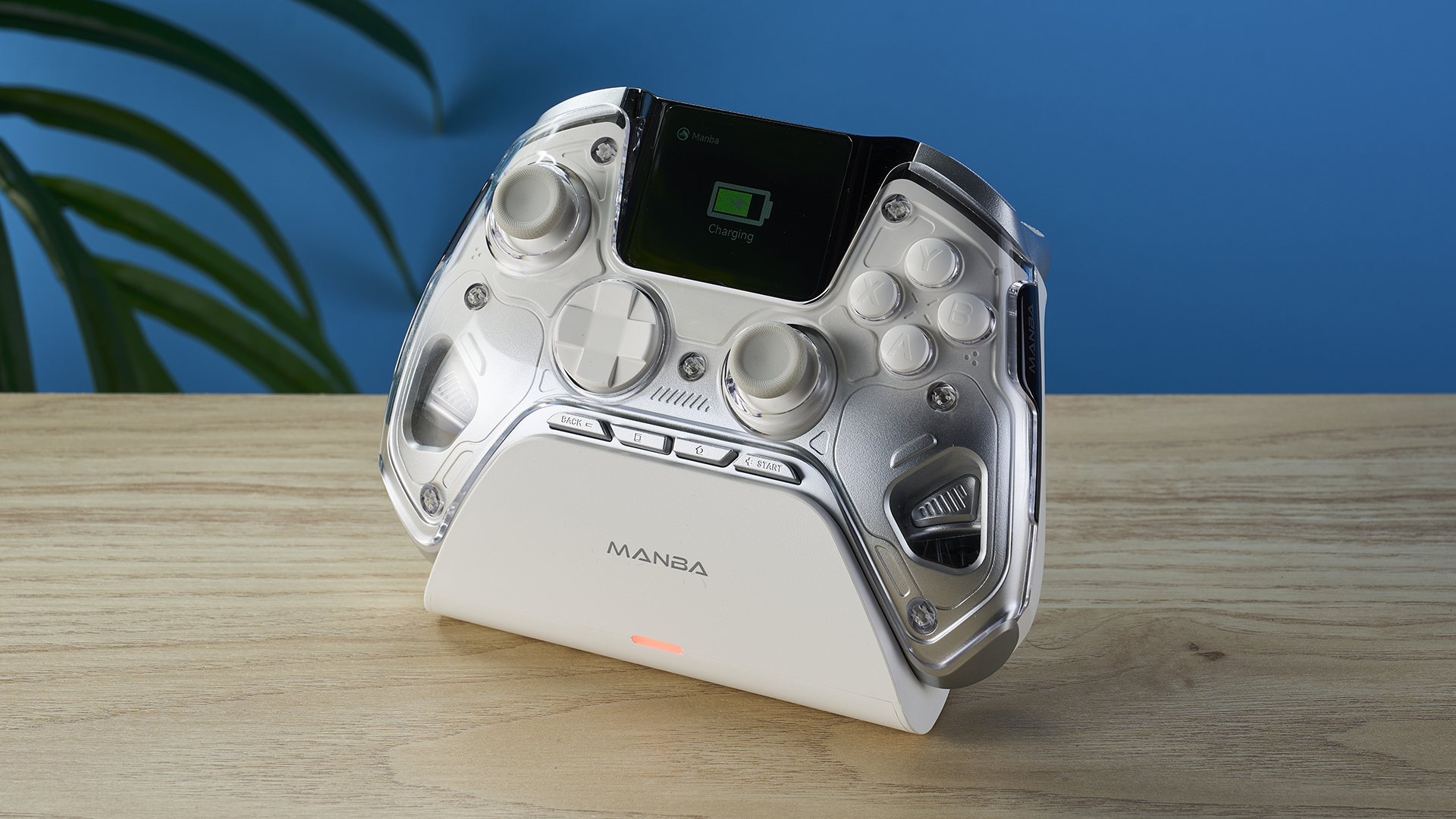
The only downside versus the Tarantula’s charging stand is that the Manba stand only includes a USB-C port, whereas the Tarantula supports both USB A and C inputs. It also emits an unnecessarily loud noise when you attach the controller, which I would have preferred to disable but couldn’t.
Manba One controller review: The downs
The Manba One unfortunately fails at a few basics that other, cheaper, controllers do well. Despite having Hall Effect technology, the buttons and triggers didn’t feel satisfying, and the controller’s button positioning made it frustrating to use. This is all contained within a shell that feels subpar thanks to the cheap materials used, both visually and in hand.
Button feedback
The Manba One uses clicky switches for the face buttons, with short travel distances. The sound is irritating, and the buttons feel mushy despite the clicky switches underneath. Both quick presses and holding the buttons down feel unsatisfying.
Making matters worse for the face buttons are the ugly etched plastic legends, a poor finish that makes them feel worse on my thumbs as well as contributing to the cheap appearance of the controller.
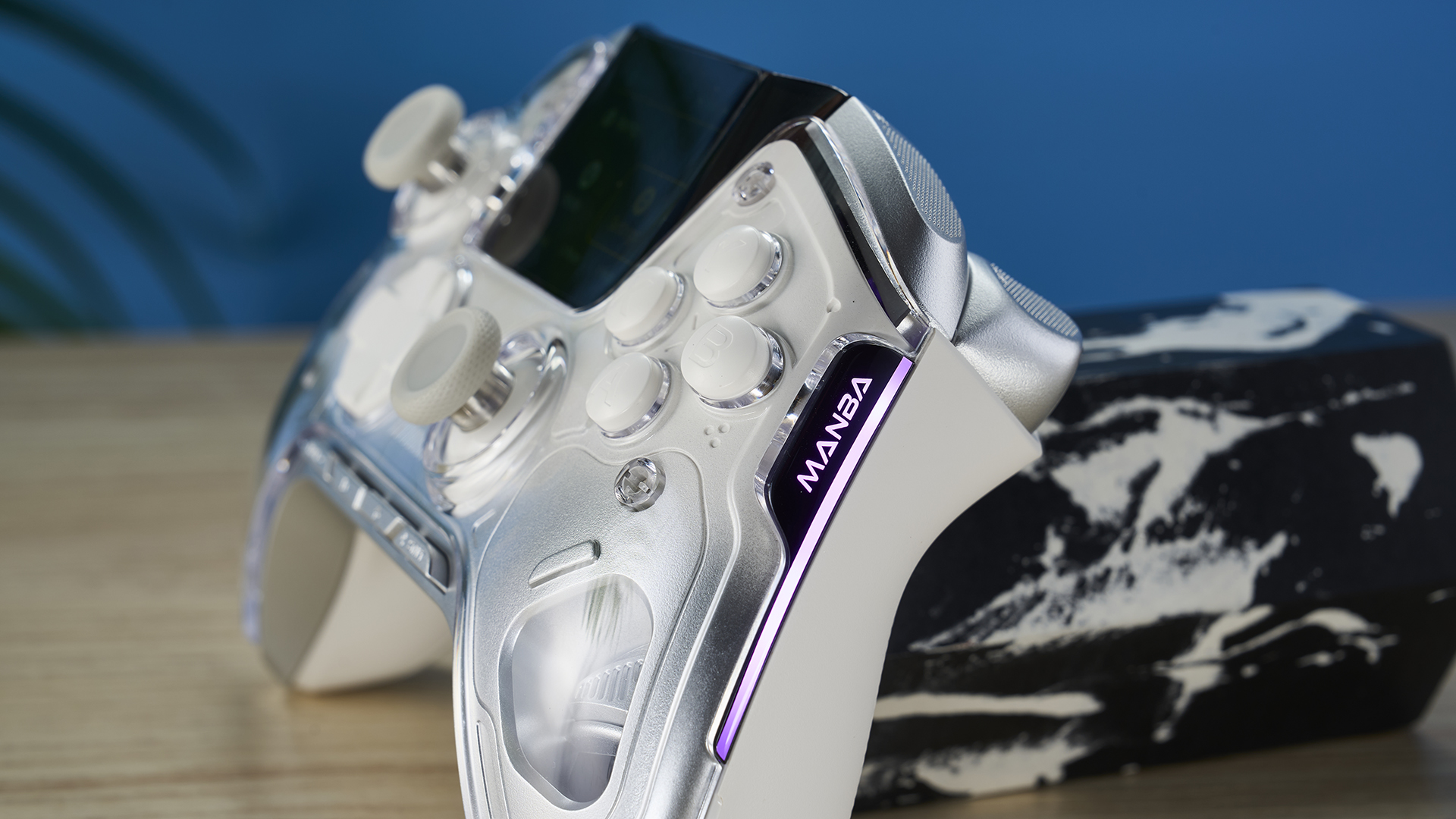
Yet another issue is the shallow press on the D-Pad. While this allowed for faster inputs, it again felt very unsatisfying to use. This feature is useful for mobile games — I used the D-pad while playing Castlevania: Symphony of the Night on my phone, and the shorter actuation distance made movements quicker. However, I would have preferred a more tactile feel like the GameSir Tarantula Pro or a deeper press like the GameSir G7 SE.
Button positioning
The placement of the Plus, Minus and Home buttons below the bulk of the controller was a little confusing and uncommon for a controller, especially when you compare the Manba One to any other Pro controller I have used. It meant that more thumb movement was required to reach for the buttons, also reducing the speed in which I could press them.

The back buttons also give me some trouble, as they are too close together to be able to reliably use them without my fingers feeling cramped. The textured surface of the button is also too close to the palm grips, which meant that they only worked as intended if I held the controller in a fingertip grip.
(Half) hair trigger
The controller uses a plastic switch on the back to toggle between long and short triggers. This essentially reduces the movement of the trigger to make it feel more like a button, although this didn’t work as well as the Hair trigger switch on the GameSir Tarantula Pro ($69). The Tarantula was able to reduce the actuation — how much you have to press to activate the trigger — to be the same as a face button. This allowed for lightning fast response time on the trigger, which is optimal for shooters.
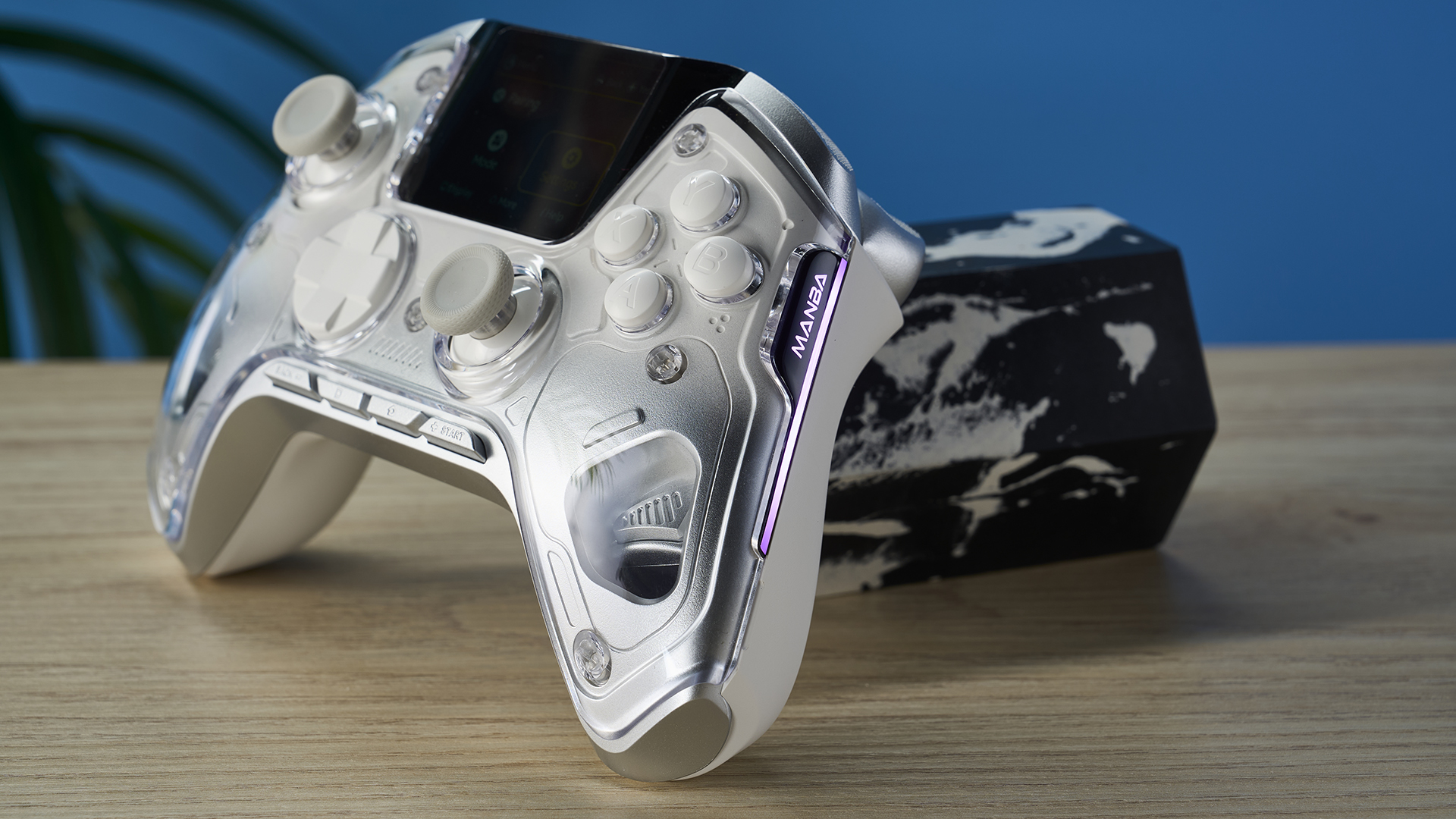
Sadly, this is not the case on the Manba One. The toggle only reduces the trigger range by about half, meaning that there is still a fairly large amount of movement when pressing the trigger down. While this still offers an advantage over traditional triggers for FPS games, it pales in comparison to the true hair trigger functionality of the Tarantula Pro, the more expensive Xbox Elite Wireless Controller Series 2 ($179), or even the cheaper GameSir Kaleid ($49).
Cheap shell
The front of the controller is encased in a transparent plastic shell, held in place by magnets. The only advantage to this is that you can peek at the motor that causes the rumble inside the grips, but otherwise looks a bit tacky.
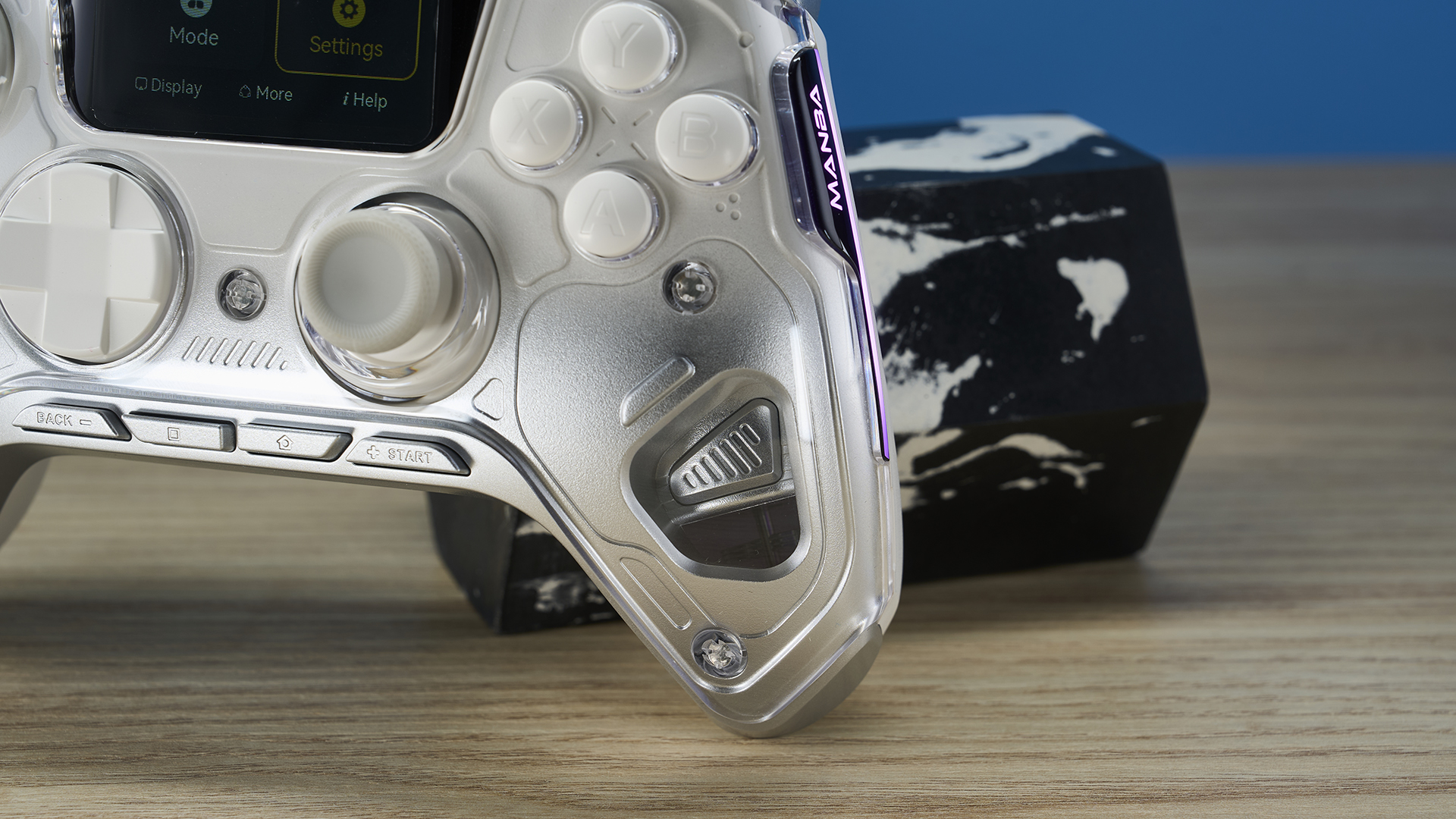
Underneath the transparent shell is the gamepad’s silver and white body, all of which looks tacky in my opinion. In some areas, the main internal components aren’t fixed properly together, either, while the palm grips have an annoying overlap between the metallic silver and white. Fortunately, this can all be avoided with the black version of the gamepad, which uses an opaque case instead.
No 2.4Ghz support
While this isn’t a con that will impact everyone, I was disappointed to find out that the included USB dongle only acts as a receiver for the Bluetooth 5.0 connection, and not as a 2.4Ghz receiver as seen on the PB Tails Metal Crush Defender. This means that you can’t use the controller wirelessly on a PC that lacks Bluetooth support.
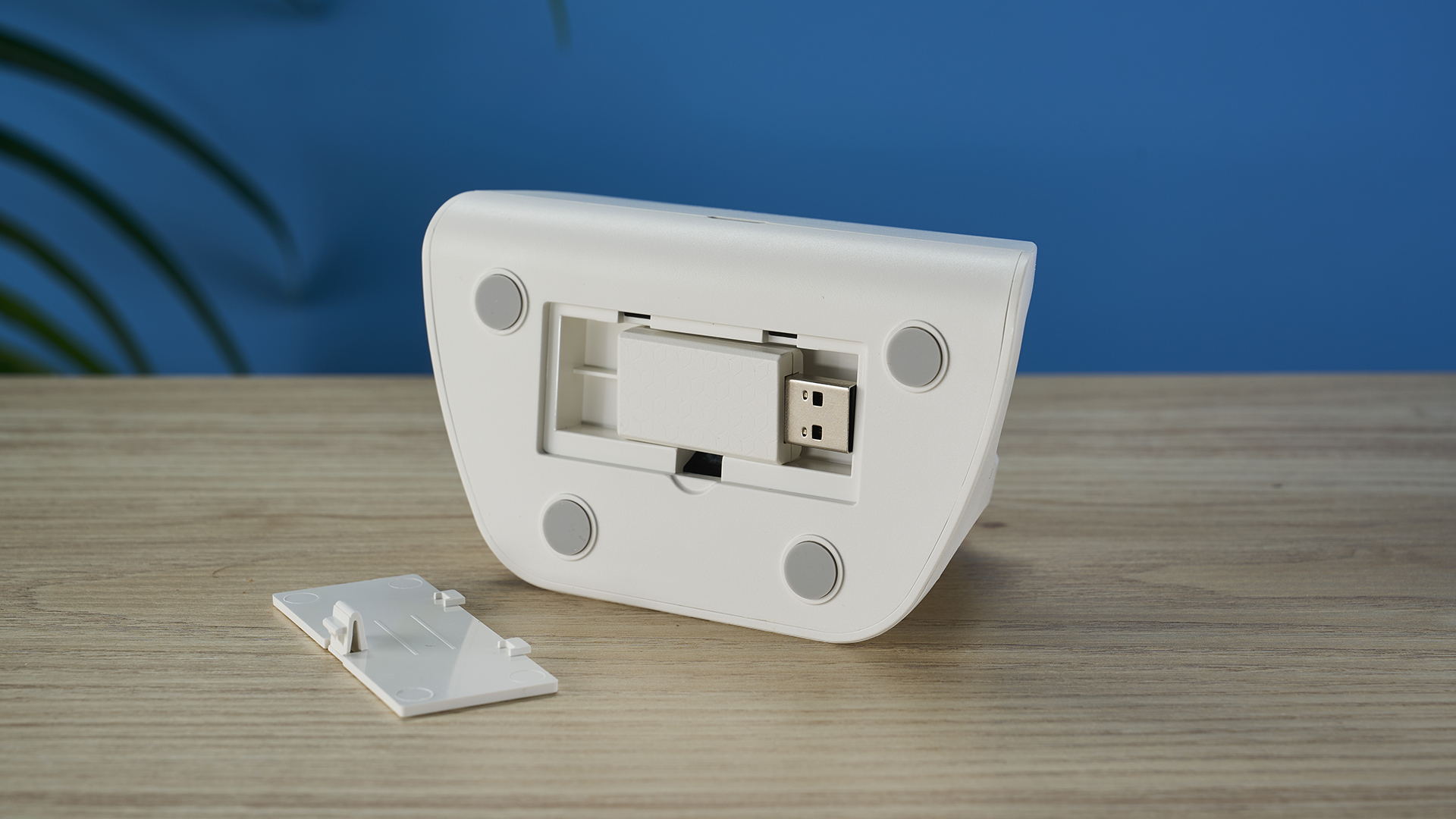
The 2.4Ghz receiver on the Crush Defender supports up to 1000Hz, which blows the 125Hz rate of the Manba One out of the water. Response times of 800Hz are possible in wired mode, but this falls short of the 1,000Hz wired capability of the GameSir G7 SE — Pro players might want to avoid this one.
Manba One controller review: Verdict
The Manba One does a lot that makes it stand out from the controller crowd, with the built-in suite of onboard customization options being best in class. The LED screen makes the Manba One a good choice for on-the-go customization, especially for Switch players.
However, I was disappointed by a lot of the basics that the gamepad fails at, with pretty unsatisfying performance on the face buttons, a divisive design and missing functionality in regards to wireless connection and hair triggers.
If you’re okay with a DualShock layout instead of the Xbox’s asymmetrical design, I highly recommend the GameSir Tarantula Pro. It offers TMR thumbsticks, an easy switch between Xbox and Switch buttons, and plenty of shortcuts for on-the-go customization, though it lacks an LED screen.
Versus competition like that, the Manba One leaves a lot to be desired.

Eve is a Staff Writer on the Reviews team at Tom’s Guide. Her expertise centers around computing, and she loves testing out the very best high performance peripherals to help you make the right choice. With her experience working in IT and a love for gaming, she has an eye for function and efficiency— this is reflected in the time spent building and customizing her own desktop PCs. In her downtime, Eve is always on the lookout for new tech to give her a competitive edge in the latest games, or a boost in her daily productivity.
